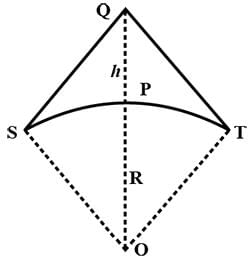Test: Signals & Transmission Systems - NEET MCQ
10 Questions MCQ Test Physics Class 12 - Test: Signals & Transmission Systems
The characteristic impedance of a coaxial wire line is of order
In which manner does current or voltage vary in an analog signal with time?
If an antenna radiates electromagnetic waves from a height h, then the range d upto which the signal can be detected is given by (R is the radius of the earth)
Super high frequencies of __________ are used in Radar and Satellite Communication.
The bandwidth sufficient for commercial telephonic communication:
Optical communication using fibres is performed in the frequency range of
Modes of communication system are classified into :
If the area of a TV telecast is to be doubled, then height of transmitting antenna will have to be
With the increase in frequencies more than 2 MHz, Ground wave propagation
What should be the approximate height of antenna if the TV telecast is to cover a radius of 100 km?
|
98 videos|334 docs|102 tests
|





















